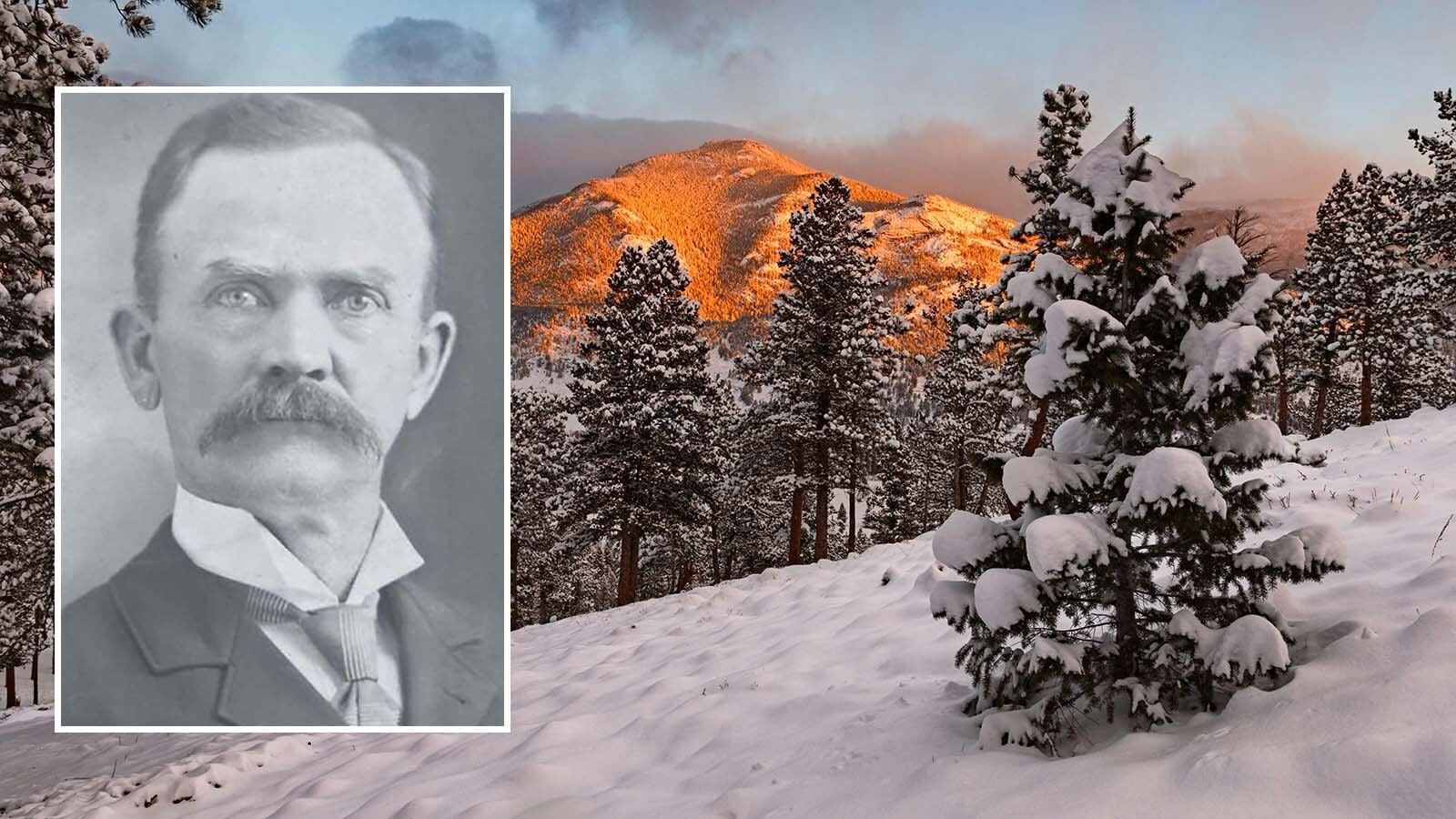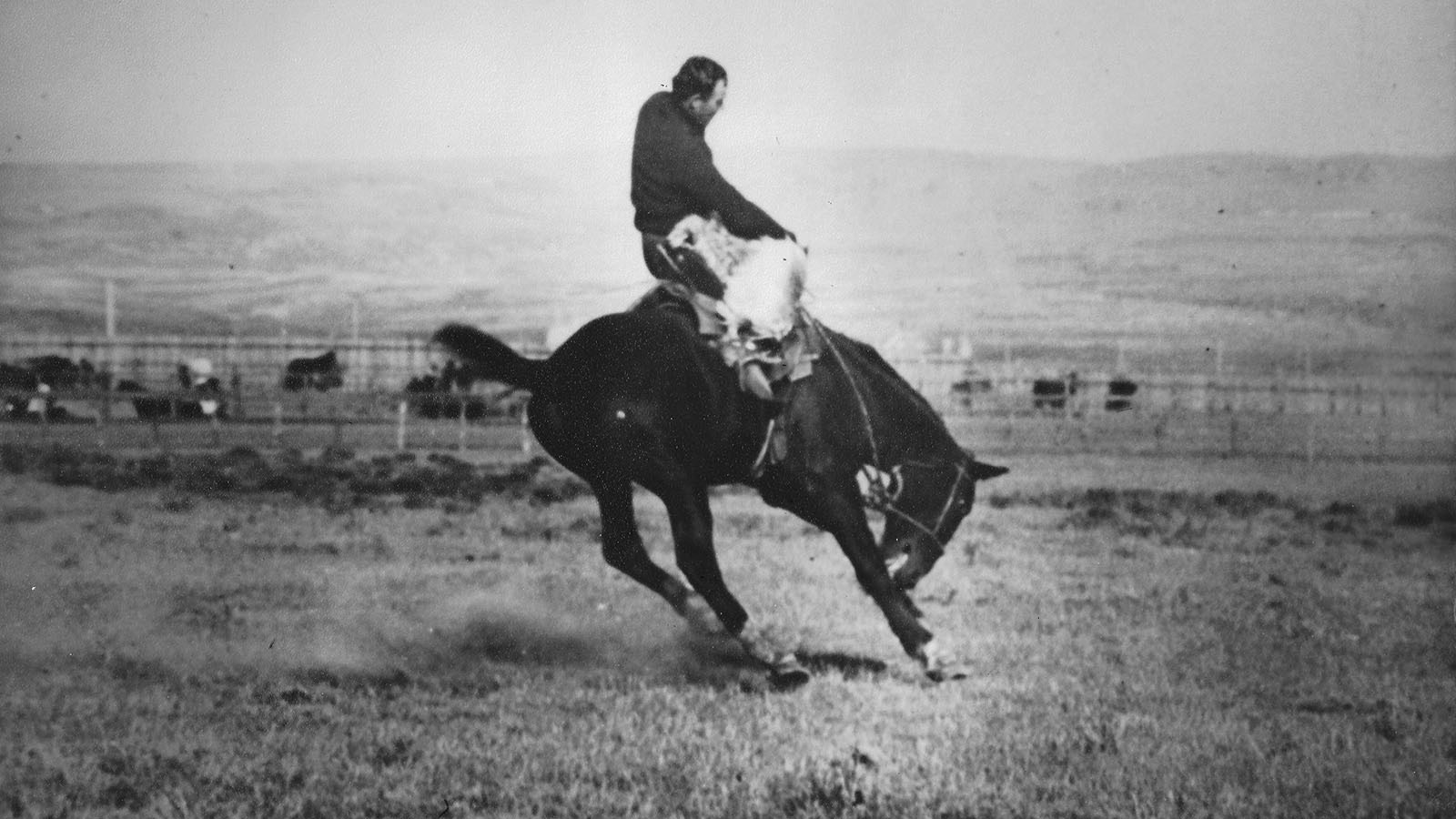On the evening of March 13, 1939, near Cody, Wyoming, Earl Durand – a mountain man who lived off the land – along with two teenagers, Ronnie Knopp, Tom Spint and Ronnie’s father, Emil, killed several out of season elk in Wyoming’s northern wilderness.
While returning home from their hunting expedition, with a trunk full of poached elk meat, the group attracted the unwanted attention of two game wardens, Dwight King and Boyd Bennion. The wardens flashed their lights and stopped the party on suspicion of poaching.
Before the car slid to a stop, Durand bolted from the cab. Armed with a buck knife and hunting rifle, he disappeared into the darkness. Durand’s defiant act would set into motion one of the most daring and deadly crime sprees to ever captivate the nation.
Earl Durand was born in 1913 to Walter (a respected farmer) and Effie Durand (a church going housewife). An avid outdoorsman and hunter, Earl spent his days in Wyoming’s northern mountain range near the small town of Powell. He was a throwback to a time when wild frontiersmen, like Jim Bridger and James Beckwourth, ruled the West.
Skilled in the old crafts and ways of the mountain trappers, Durand skinned and tanned hides with ease and was highly adept with any myriad of weapons. A true woodsman, Durand made his own law. Unwilling to give in to a rapidly changing world that abandoned the ways of the past, Durand fought an inevitable future that eventually sent death crashing down upon his head.
While on the lam from the law, Durand added to his criminal charges of poaching and resisting arrest by killing and butchering a rancher’s calf, devouring the raw tenderloin. The incident caused the national media, after getting wind of the story, to brand Durand a “raw meat-eating fugitive.”
Law enforcement officers quickly organized an informal posse and followed Durand’s trail, eventually capturing the elusive outlaw on nearby Rattlesnake Mountain.
Durand was brought before a judge who immediately imposed a sentence of 60 days in jail upon him and levied a fine for the poaching of the elk. While in jail and awaiting sentencing for the theft of the calf, Durand escaped by assaulting Deputy Noah Riley with a milk bottle taken from his dinner tray. Durand then forced Riley to drive him to his family farm in nearby Powell.
Word quickly spread of the daring escape and Town Marshal Chuck Lewis and Undersheriff D.M. Baker were dispatched to bring the depression era desperado to justice.
Unfortunately for the lawmen, Durand would not be taken without a fight. With rifle at the ready, Durand shot and killed the two officers in the driveway of his parent’s home. He stole another rifle from a neighbor and headed for the sanctuary of the surrounding wilderness.
Holed up for six days, his whereabouts would remain largely unknown. That soon changed however, when Wyoming Sheriff Frank Blackburn returned from vacation and took control of a determined posse of sharp shooters, trained trackers and law officers.
Before the posse set out to track Durand Sheriff Blackburn warned them saying, “Caution is the word, men. Durand has killed before. Nothing will stop him from killing now.”
On March 21, reports circulated that Durand had been spotted pillaging several neighboring farmhouses for supplies. The posse chased him from farm to farm but each time Durand skillfully eluded capture. In the wee hours of the following day, Earl kidnapped an elderly couple from their home and forced them to drive him to the Beartooth Mountain range just north of Yellowstone National Park.
Reports of Durand’s movement triggered Sheriff Blackburn to press his posse to the base of the mountains, setting up central command in a small hunting cabin. Blackburn ordered a cadre of posse members to scour the area in a dragnet search for the fugitive. By midday, Durand was spotted in a fortified position on the mountainside.
Durand’s position appeared impregnable, causing most of the posse members to hang back, attempting to wait the bandit out. But two non-posse men, Orville Linabary and Arthur Argento, who had tagged-a-long with the group, unadvisedly charged Durand’s mountain blockade. This rash action proved fatal for the men as Durand fired several bullets into their bellies, killing both.
After these murders, the remaining posse men ducked their heads and dared not move. Durand, sensing their indecision, seized this moment to descend upon the two corpses. Under the cover of darkness, he destroyed their firearms, stole one man’s boots, the other’s bootlaces and snitched a deputy’s badge that one of the men was carrying.
Catching wind of the deadly debacle, the Montana National Guard rushed a mortar and howitzer to the scene in hopes of subduing the lone gunman’s rampage.
Sheriff Blackburn also enlisted the assistance of a local pilot by the name of Bill Monday. Monday’s plane soon soared skyward armed with a bevy of dynamite bombs and teargas grenades. As Monday rained down destruction from above, Durand stealthily abandoned his encampment.
After shaving and trimming his hair Durand pinned the stolen sheriff’s badge to his chest and posed as a law officer. He hitched a ride with Harry Moore, the posse’s radio operator, and two other passengers, John and Peter Simpson. Once in the car, the men soon realized they were hostages to a mass murderer.
On the morning of March 24, an aerial sweep of the mountains revealed Durand had flown the coop. Bewildered by the craftiness of the outlaw, Sheriff Blackburn fumed with frustration and tried to formulate his next move.
Meanwhile, Durand commanded his hostages to drive him back to Powell. Once there, he released his captives, loaded his rifle and made a bee-line for the First National Bank. With a .30 – .30 rifle clutched tightly to his chest and a six-shooter strapped to his hip, he barged into the bank and demanded $3,000.
Durand bound the wrists of Bank President R.A. Nelson as well as Cashier Maurice Knutson and Teller John Gawthrop. Terrorizing the nine employees and customers, Durand fired a barrage of bullets into the bank lights, walls and windows while screaming, “They’ll plug me anyway! They’ll plug me anyway!” (Some accounts claim as many as 40 to 50 bullets blitzed the lobby of the bank).
Soon after his onslaught Durand grabbed Nelson, Knutson, and Gawthrop, trained the cold steel muzzle of his rifle on them and shouted, “Come on boys we’re going out!”
Word of the bank robbery spread quickly throughout the small rural community of Powell. Many of the townspeople picked up their weapons and went to defend their bank. In a scene reminiscent of the equally daring robberies of Northfield or Coffeyville, the more than hardy inhabitants of the little frontier town of Powell scaled the rooftop of the bank and stepped into the street with their shotguns and rifles.
As Durand and the captives emerged from the bank, the citizens unleashed a volley of lead. Positioning himself behind his hostages, Durand was able to dodge the initial torrent of bullets. Sadly, the hostages did not fare as well. Gawthrop was fatally wounded, Knutson took cover behind the bank’s door, and President Nelson hit the ground to avoid being shot.
With the hostages falling in front of him, Durand wildly returned fire and then made a break for his hijacked car.
In a strange twist to the story, a young 17-year-old boy named Tipton Cox was playing hooky from school and found himself in the middle of the Wild West shootout. To avoid the danger, Tipton took cover in the doorway of the local Texaco filling station. Otis Gillette, the proprietor, thrust a loaded Winchester lever action rifle into the boy’s hands and yelled, “The bank’s being held up!”
Undaunted and unfazed Cox lined up his shot and with a calm hand, squeezed the trigger striking Durand in the chest. Mortally wounded, Durand crawled back inside the bank where he drew his six-shooter and fired a fatal shot into his own neck.
Bank President Nelson, realizing the desperado was dead, wriggled free of the bindings Durand had placed upon him and snatched the dead man’s rifle from the ground. Standing over the fallen killer, he pumped one more round into Durand’s head.
A tale that should have found its way into legend, however, soon faded from memory. Those bloody eleven days led Durand’s own father to say, “The boy seems to have gone insane and started killing men he has known throughout his lifetime.”
In anguish he cried out, “...God help my boy!” After the initial story appeared on several newsstands and national magazines such as Time, the citizens of Powell and many others in Wyoming soon pushed the event from their collective consciousness.
In 1974 a small Hollywood production company, Howco International Pictures, produced a film “loosely” based on the incident titled “The Legend of Earl Durand,” starring Martin Sheen and Slim Pickens.
In this modern Western, Durand is portrayed as a type of misunderstood folk hero battling an oppressive small-town sheriff for his right to freedom. It is said that when the film screened in Powell the patrons walked out in disgust before the final credits ever ran.
Why a young man only 26 years old began killing people he had known since childhood is truly baffling. It has been theorized that the charges and subsequent jail time felt like a death sentence to a man whose life revolved around the outdoors and living in the mountains. Perhaps the thought of spending time behind bars and away from the wilderness he loved drove him over the edge.
It has also been theorized by some of Earl’s relatives that he suffered from claustrophobia. His inability to handle the enclosure of his jail cell and the prospect of years in prison may have led to his initial jailbreak.
Ultimately, the truth for Durand’s bizarre homicidal rampage will never be known. But what seems true is that Durand was a man out of place, a soul born in the wrong century. He would have been more at home with the mountain men of a bygone era, hunting grizzlies and trapping for a living.
Instead, he was born in a period that had long since shed its Old West roots and grown a new Twentieth Century skin. He appeared to be in conflict with everything around him and felt his only alternative was to lash out in a fit of violence.
Kellen Cutsforth can be reached at kcutsforth@denverlibrary.org





